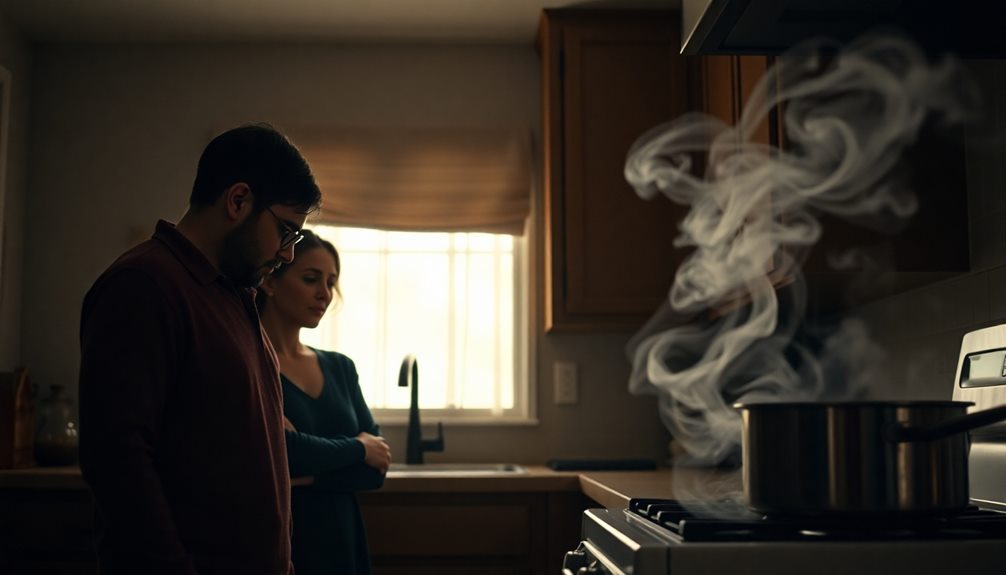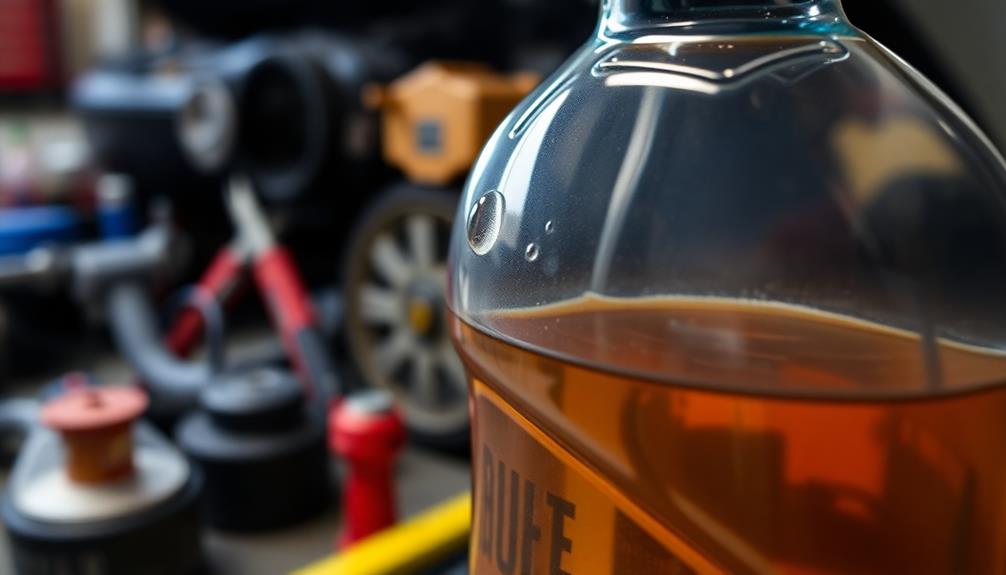Carbon monoxide doesn't smell like anything at all! It's a colorless and odorless gas, which makes it incredibly dangerous. Since you can't detect it by scent, it's crucial to stay alert, especially if you use gas appliances or heat your home. This silent menace often comes from things like cars, stoves, and heaters, particularly in poorly ventilated spaces. To keep yourself safe, installing carbon monoxide detectors is a must. They'll alert you to any dangerous buildup before it's too late. Want to find out more about keeping your home safe from this invisible danger? There's a lot to explore!
Key Takeaways
- Carbon monoxide is completely odorless, meaning it has no smell at all.
- Its lack of scent makes it difficult to detect without proper equipment.
- Exposure to carbon monoxide can lead to serious health risks if undetected.
- Installing carbon monoxide detectors is essential for early warning and safety.
- Awareness of its odorless nature helps reinforce the importance of safety measures in homes.
Introduction

Often, people wonder about the smell of carbon monoxide, especially since it's a colorless and odorless gas. This mysterious quality makes it hard to detect, which can be quite concerning. You might find yourself thinking about how dangerous it can be if you can't smell it. Understanding this gas is important for your safety and awareness.
Carbon monoxide forms when fuels like gas, wood, or charcoal burn. It's often found in homes, especially when appliances aren't working properly. It's crucial to be alert and know how to protect yourself from it. Knowing that carbon monoxide doesn't give off any warning signs emphasizes the need for safety measures.
You may wonder how to stay safe in your home. Installing a carbon monoxide detector is one of the best steps you can take. This small device can alert you to the presence of this invisible gas, providing peace of mind.
Being informed and prepared can help you avoid dangers associated with carbon monoxide. So, keep your detectors in good shape and ensure your home is safe. Stay curious, stay safe, and let's dive deeper into understanding this important topic together!
Description of the Smell
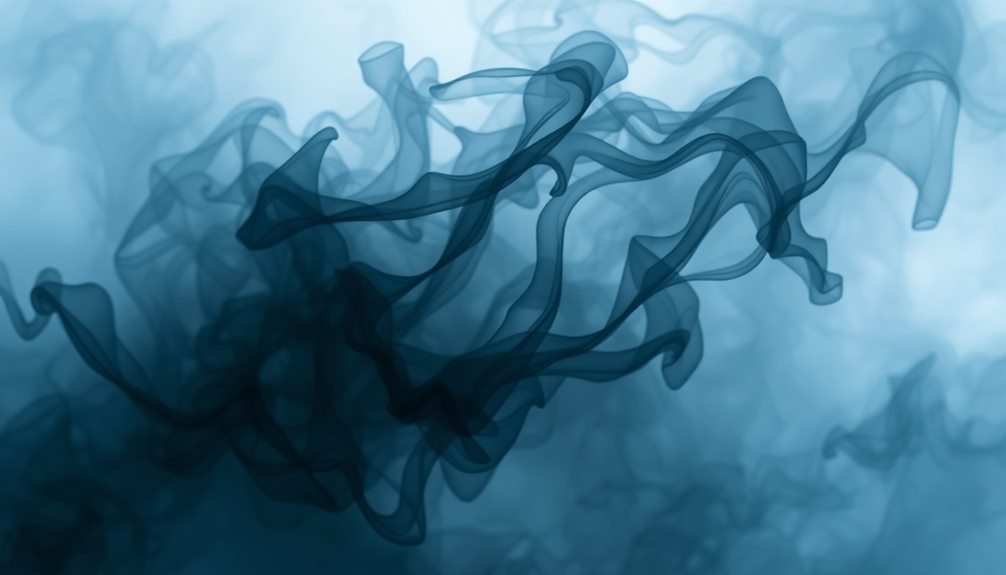
When it comes to carbon monoxide, you won't pick up on any smell at all. That's right! This gas is completely odorless, which makes it particularly dangerous. You might think, "How could something so harmful have no scent?" Well, that's just how carbon monoxide works. It sneaks up on you without any warning.
Imagine walking into a room, and everything seems perfectly normal. You're breathing in the air, but there's no whiff of danger. This is what makes carbon monoxide so tricky. You won't notice it until it's too late. Unlike a stinky gas that makes you wrinkle your nose, carbon monoxide is silent and invisible.
Because of its odorless nature, it's super important to have a carbon monoxide detector in your home. This little device can save lives by alerting you when levels of this gas become unsafe.
Always remember, your safety comes first! So, while you won't smell carbon monoxide, you can take steps to protect yourself and your loved ones. Stay aware, and make sure you're prepared!
Source and Composition
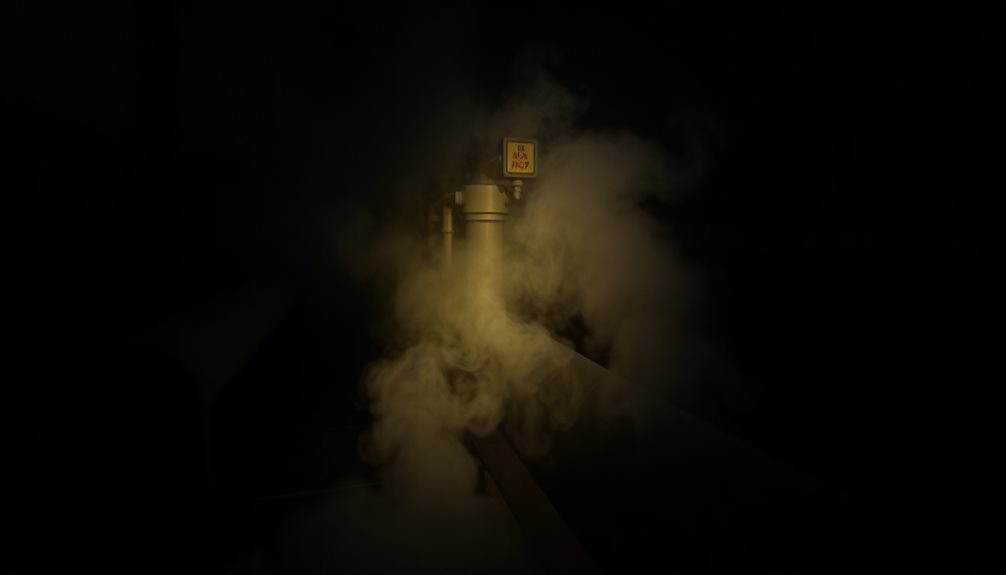
Carbon monoxide primarily originates from the incomplete combustion of fossil fuels. This means when something like gasoline, natural gas, or coal burns, it doesn't always turn fully into carbon dioxide. Instead, it can create carbon monoxide, which is a colorless and odorless gas. Isn't that surprising? You mightn't even notice it's there!
You'll find carbon monoxide in places where engines run, like cars and generators. It can also come from home heating systems and stoves that aren't working correctly. When these appliances don't get enough air, they create more carbon monoxide. It's like trying to breathe with a scarf over your mouth—harder to get what you need!
The composition of carbon monoxide is simple; it's made of one carbon atom bonded to one oxygen atom. This makes it different from carbon dioxide, which has two oxygen atoms. Knowing this helps you understand why carbon monoxide is so dangerous.
It can sneak up on you, as you can't see or smell it, making it essential to have working detectors in your home. Stay informed and keep your environment safe!
Typical Scenarios or Environments
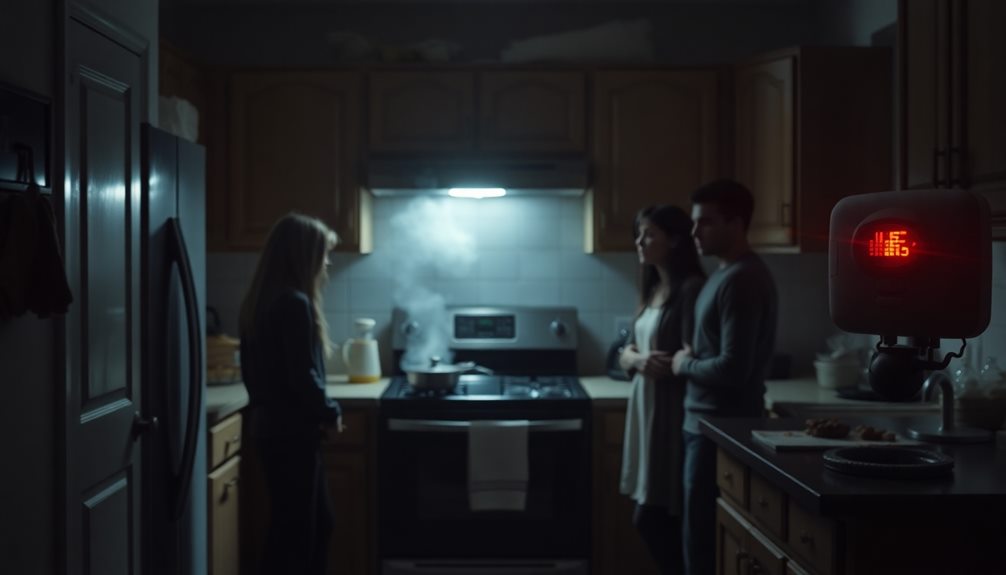
While many people mightn't consider it, carbon monoxide can be found in various everyday environments, posing a hidden threat.
You might encounter it in your home, especially when using gas appliances like stoves and heaters. If your furnace isn't well-ventilated, it can release this odorless gas, making it crucial to check for leaks regularly.
Another common scenario is when you're in a garage with a running car. The exhaust fumes can quickly build up, creating a dangerous situation.
Even in outdoor spaces, like when using a grill or fire pit, carbon monoxide can linger. It's important to use these items in well-ventilated areas.
When you think about your favorite cozy evenings—whether cooking dinner or relaxing by the fire—remember that safety is key.
Installing carbon monoxide detectors in your home can help keep you safe. These devices alert you to any dangerous levels, giving you peace of mind.
Always be aware of your surroundings and ensure proper ventilation when using fuel-burning appliances. Being informed about where carbon monoxide can be found helps you protect yourself and your loved ones.
Emotional or Cultural Associations
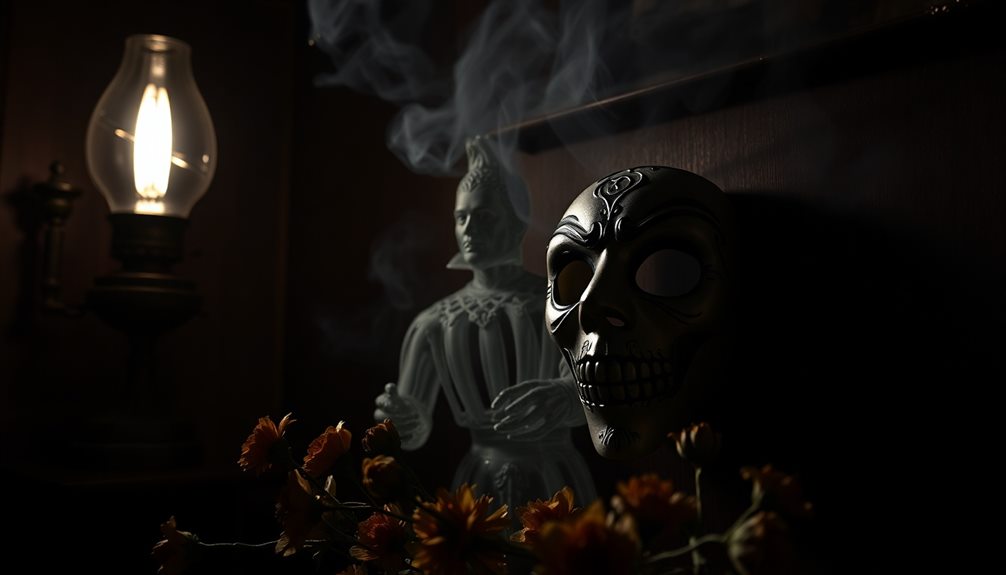
The idea of carbon monoxide often evokes a sense of unease, as it represents an invisible danger lurking in familiar spaces. You might think of cozy winter nights by the fireplace, but then remember that something unseen could spoil that warmth.
Culturally, carbon monoxide can symbolize fear and caution. Movies and stories often depict it as a silent killer, heightening our anxiety about safety in our homes.
When you hear about carbon monoxide, it might remind you of safety drills in school or the importance of checking alarms at home. It's a topic that connects us, as we all share the responsibility of keeping our loved ones safe. People often bond over their experiences and tips for detecting this gas, forming a community of awareness and prevention.
In many cultures, the idea of a safe home is sacred. Carbon monoxide, with its stealthy nature, challenges that sense of security. Recognizing its dangers can inspire you to take action, ensuring your environment feels safe and sound.
Ultimately, understanding carbon monoxide deepens your appreciation for the comfort of home, reminding you to cherish every moment spent in it.
Health or Safety Considerations
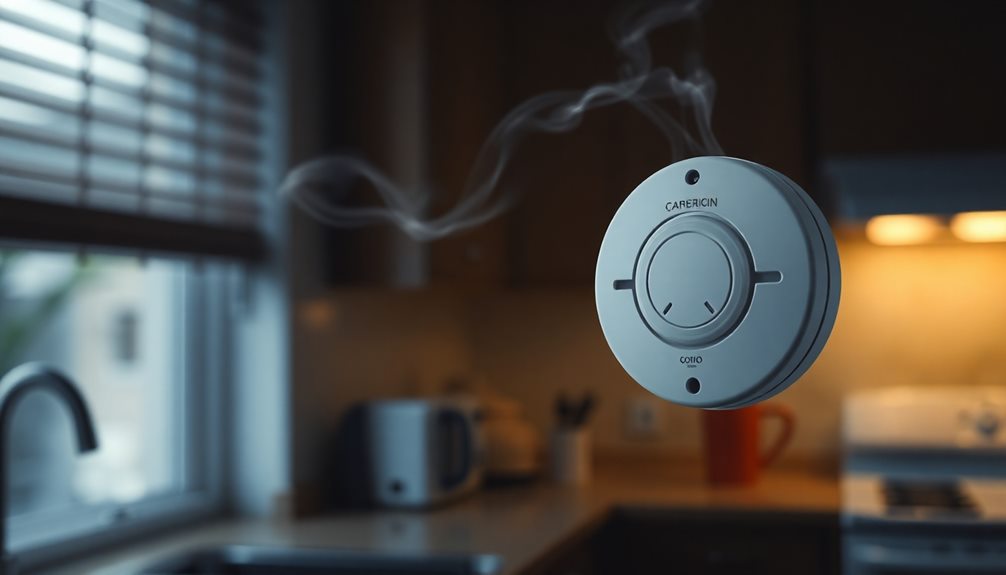
Understanding the risks associated with carbon monoxide is crucial for maintaining a safe home. This colorless, odorless gas can sneak up on you, making it especially dangerous. You mightn't realize it's there until it's too late!
To keep yourself and your family safe, install carbon monoxide detectors throughout your home. Place them near sleeping areas and on every level of your house. Test these detectors monthly to make sure they're working properly. If they beep or show a warning, take it seriously! Evacuate immediately and call for help.
It's also important to keep your home well-ventilated, especially when using gas appliances. Make sure to check your furnace and water heater annually, ensuring they're functioning properly.
If you ever experience symptoms like headaches, dizziness, or nausea, get fresh air right away. These could be signs of carbon monoxide poisoning, and you should seek medical attention if symptoms persist.
Final Thoughts
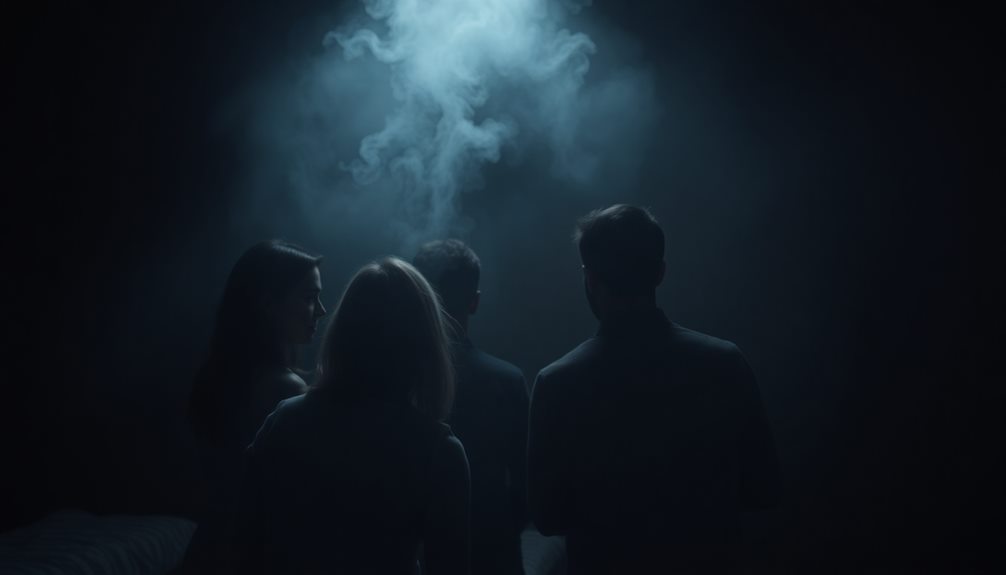
Carbon monoxide is a silent threat that can lurk in your home without warning. It's colorless and odorless, making it hard to detect. This is why knowing about it's crucial for your safety.
If you think about your home, you probably have appliances that can produce this dangerous gas, like stoves or furnaces.
To keep yourself and your loved ones safe, it's essential to install carbon monoxide detectors. These little devices can be life-savers! They alert you if levels become dangerous, giving you time to escape and call for help.
Be sure to check their batteries regularly, just like you do with smoke detectors.
Frequently Asked Questions
Can Monoxide Be Detected by Smell in Low Concentrations?
You can't detect monoxide by smell in low concentrations. It's odorless, making it particularly dangerous. Always use a reliable detector to ensure your safety, as relying on your senses alone won't provide adequate protection.
What Are the Symptoms of Monoxide Exposure?
If you're exposed to monoxide, you might experience symptoms like headaches, dizziness, weakness, nausea, and confusion. It's essential to recognize these signs early, as they can lead to more serious health issues if untreated.
How Can I Test for Monoxide in My Home?
To test for monoxide in your home, install a carbon monoxide detector near sleeping areas. Regularly check its batteries and functionality. If you suspect a leak, leave immediately and call professionals for assistance.
Are There Specific Groups More Vulnerable to Monoxide Poisoning?
Certain groups, like children, the elderly, and individuals with respiratory conditions, are more vulnerable to carbon monoxide poisoning. Their bodies can't handle low oxygen levels as effectively, so you should always ensure proper ventilation in your home.
What Should I Do if I Suspect Monoxide Presence?
If you suspect monoxide presence, immediately evacuate everyone from the area. Call emergency services and don't re-enter until professionals confirm it's safe. Install a detector to prevent future risks and ensure your safety.
